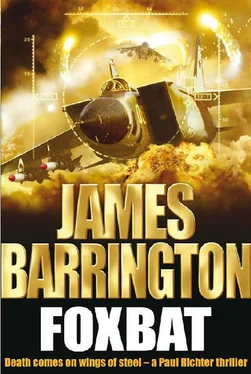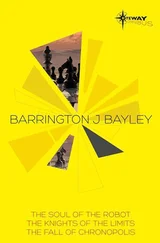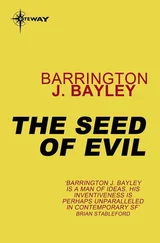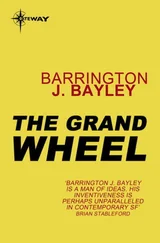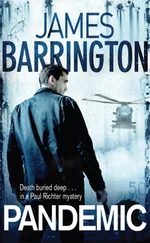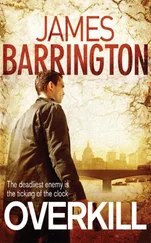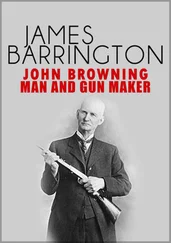‘Chunghwa, Zero Six. What aircraft type are the Americans?’
‘Unconfirmed, but probably not American aircraft. We believe they’re British Harrier fighters.’
‘Understood. Zero Six group is in descent and accelerating.’
The fact that, according to the North Korean radar controllers, the aircraft Malakov would encounter in a few minutes weren’t American but British didn’t bother him. A target was a target, and his training throughout almost his entire military career had been geared towards air combat, a skill that he’d never, until now, been able to demonstrate for real. Unfortunately, pitting seven MiG-25s against two British Harriers was hardly fair – Malakov knew his aircraft could easily destroy a Harrier in one-to-one combat. For a brief moment he thought about disobeying Chunghwa and telling five of the pilots to return to the formation, just to make the contest slightly more even. Then he rejected this idea. He’d just make sure he personally shot down one of the attacking aircraft.
Cobra formation, over North Korea
‘Ten miles to target. Prep the weapons.’
Richter clicked an acknowledgement and started preparing his two Mavericks. He was keenly aware that, between them, the two Harriers had only four Mavericks and there were six targets to hit. He was hoping that they could ignite the fuel in one of the Scuds, and that might be enough to take out a second missile. But if they were well separated – and that would be a normal precaution when handling highly volatile fuel and munitions – destroying more than one with each weapon might prove impossible. If it was, they’d have to rely on the CRV7 rocket pods.
Chiha-ri missile base, North Korea
They were only two minutes from the end of the countdown for the first Scud launch when the telephone link to Chunghwa shrilled. The sound it made was different to every other phone in the command bunker, apart from the direct line to Pyongyang, and the commanding officer ran across to his desk to answer it.
‘This is Chiha-ri.’
‘What is your launch status?’
The colonel looked across at the digital display before answering. ‘Ninety-seven seconds from first launch. As ordered, the remaining weapons will be fired at thirty-second intervals.’
‘Can you speed up the process?’
‘Negative, Chunghwa. We can pause or stop the countdown, but the launch sequence has to be followed. Why?’
‘Because our radar reports that there are two enemy aircraft heading directly towards you from the south, now about one minute away. Those missiles must be fired, Colonel.’
The commanding officer didn’t reply, simply dropped the telephone receiver on the desk, selected area broadcast and reached for the microphone.
‘Air raid warning! Air raid warning! Two enemy aircraft approaching from the south. All anti-aircraft crews stand by. Fire at will.’
His voice echoed around the firing complex from some thirty speakers. The air-defence systems were already fully manned, and had been since well before first light that morning. The chief anti-aircraft weapon at Chiha-ri was a slightly modified Russian SA-3 SAM system. To provide optimum defence against air attack, the North Koreans had installed eight permanent twin-missile turrets around the perimeter of the launch complex, making a total of sixteen Mach 3 missiles.
The SA-3 is controlled by three separate radars, all normally carried on vehicles, but at Chiha-ri they had been mounted in fixed locations on the tallest hill within the firing complex. Initial target acquisition was handled by a P-15 ‘Flat Face’ long-range C-band radar. The target’s height was determined by a PRV-11 E-band height finder known to the West as ‘Side Net’, and a ‘Low Blow’ I/D-band fire control radar provided initial guidance to the missiles.
Although an old design, the SA-3 is still very capable. In March 1999 a Yugoslav-modified version of the weapon system – having been fitted with thermal-imaging equipment and a laser range-finder – was responsible for shooting down an American F-117 stealth fighter over Kosovo. To date, that is the only recorded loss of this aircraft type as a result of ground fire.
The reason the North Koreans had located the radars at the top of the highest ground in the vicinity was obvious – the terrain was so hilly that an aircraft even half a mile away might remain invisible in some valley. To have any chance of engaging a low-flying target, the radar heads simply had to be mounted as high as possible.
The commanding officer’s broadcast was actually redundant. The SA-3 crews were fully alert, scanning their radars constantly, but no contacts were yet being displayed. This was in part because radar coverage of the valley directly to the south of the firing complex was slightly obscured by a hill whose peak was at about sixteen hundred feet, but mainly because the Harriers were still some three miles – or thirty seconds – away and below the radar horizon.
Eighteen seconds later that all changed.
Cobra formation, over North Korea
‘Cobras, Alpha Three. Flash message. Seven of the hostiles that have been holding north of the DMZ have detached from the formation and are now heading south. They’ve increased speed to Mach two and we estimate they’re about four minutes away.’
‘Roger.’ There wasn’t much else Richter could say. But four minutes was a long time in a Harrier, and, with any luck, they’d have completed their attack on the missile base and be on their way back towards the DMZ before the approaching aircraft caught up with them. The fact that the enemy fighters were travelling at Mach 2 meant they were probably Foxbats, and he knew they weren’t easy to fly at low level. If the GR9s stayed low and fast, they might be able to outmanoeuvre them, even if they could never outrun them.
The two Harriers were now flying in line astern, Richter about a quarter of a mile behind Long’s aircraft. The sides of the valley seemed perilously close, and the floor closer still, but both men knew they had to stay as low as possible to avoid being detected by the fire-control radars they knew would be waiting for them at the target.
At that point, they were a mere three hundred feet above the valley’s rocky floor, which was now sloping upwards. Dick Long eased his Harrier left, following the curve of the valley, and started to climb. Richter could see a rocky ridge directly in front of them, the course of the valley veering sharply to the left, and followed Long as he jinked around it, turning west, then almost immediately north.
Behind it was another ridge, the highest point – about sixteen hundred feet – lying to the east, the top of it sloping gently westwards. They couldn’t go round it, so they’d have to fly over it, which would probably bring them within the coverage envelope of the Chiha-ri radars, but there wasn’t any alternative.
Dick Long aimed for the lowest point, pulled his aircraft up and over the ridge with a bare hundred feet clearance, then dropped down into the valley beyond. Richter was right behind him, and according to his INGPS at the crest of the ridge they were one and a third miles from the waypoint the Hawkeye crew had given them, and a little under three miles from their target.
‘I’m picking up C-band radar, probably Flat Face. That means SA-3 Goa SAMs.’ Even over the radio, the tension in Long’s voice was palpable. ‘Watch out for the I/D-band Low Blow fire-control radar, but Zeus should handle it.’
‘I admire your confidence,’ Richter said, increasing speed to close up on the other Harrier as the valley widened below them.
Chiha-ri missile base, North Korea
In the concrete bunker that served as the control position for the SA-3 anti-aircraft missile system, one of the radar operators suddenly called out.
Читать дальше
